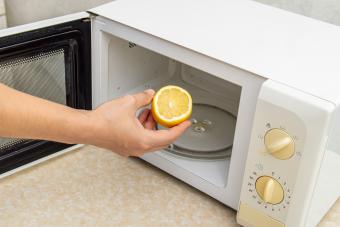
As a kid, exaggerated cartoons and pest control commercials made termites sound like the worst thing that could happen to a homeowner. But once you’ve got a mortgage under your belt, you know that mold takes the cake. Save thousands of dollars in exploratory tests by learning how to detect mold inside your walls on your own.
4 Ways to Detect Mold Inside Your Walls
Mold is a creeping, silent threat that waits in the shadows to strike. The worst part? Most people don’t know they’ve been overrun until it’s too late.
Get ahead of the infestation before it sets up shop by knowing what signs to look for.

You’ve Got Dark Stains on the Walls
Unexplainable staining on the walls could indicate a water leak, mold, or both. If it’s just a water stain, the discoloration shouldn’t change from the first time you notice it (unless the leak continues). A mold stain can darken to a deep black over time and might even make the wall fuzzy or textured.
Your Walls Feel Damp or Wet
Wet or damp walls go hand-in-hand with discoloration. Cool, dark places and water are the breeding ground for mold. So, where there’s water, there’s a chance for mold. Combine this sign with others, and there’s a high likelihood there’s mold growing in your walls.
You Notice a Strange Smell
According to the EPA, mold produces microbial volatile organic compounds. These compounds have a strong odor, which is what causes the strange musty smell people associate with mold. If mold is growing in inaccessible areas, your first clue that it’s there might only be this musty smell. Simply, follow your nose!
New Physical Symptoms Start Popping Up
Not all mold is toxic, but an abundance of the right kinds of mold can lead to physical symptoms. Things things like coughing, congestion, itchy eyes, and wheezing. In more severe cases, it can trigger things like epilepsy. Mold-related illnesses are no joke, and if you think symptoms might stem from mold, you should take action right away.
2 Things You Should Never Do to Check for Mold
When it comes to finding mold in your walls, you don’t need to MacGyver your way into getting back there. Keep yourself and anyone else living with you safe by staying far away from these detection methods.
Break Open the Walls in Question
Your home isn’t a rage room, and you don’t need to take a bandsaw or sledgehammer to your walls just to check for mold. For many of us, seeing is believing, and you can’t help but want to lock your eyes on the infernal black goop that’s ruining your day. But mold releases mold spores, which are microscopic spores that flit through the air. You can breathe them in and spread mold throughout your house. Don’t give in to your curiosity and make matters worse.
Touch Anything Suspicious With Your Bare Hands
It goes without saying, but you don’t need to poke at the black stain in the corner of the room. If it is mold and not something harmless, then you’ve just spread mold spores everywhere and directly contaminated yourself. So, when you’re testing for mold, keep your hands to yourself.
Confirm Your Suspicions With These Tests
If you’ve got an inkling that there’s mold growing inside your walls, you don’t have to immediately hire a professional. You can do your own at-home testing first, so you have enough evidence to warrant hiring the pros. Your wallet will be thrilled that you did.

Take Moisture Meter Readings
Moisture meters are handheld tools that read how much moisture is in something. You can get a moisture meter from any major retailer for under $20. If the moisture meter shows that your walls have 20% or higher moisture content, then there could be mold growing back there.
Take a Surface Swab Test
Surface mold tests work like any swab test. You take a swab sample from the area you think has mold and let the sample sit for a few days to see if any cultures grow. This works best if there is some visual mold present. But visibly stained, dark patches on the walls are the next best thing.
Don’t Make a Mountain Out of a Mold Hill
If you notice a small, discolored patch on your wall, don’t panic. Having one or two of these symptoms doesn’t guarantee that there’s mold in the walls. While you don’t want to make a mountain out of a mold hill, you do want to err on the side of caution. Keep your eyes out for the main signs that mold is growing inside the walls and take a test if you want to be sure.







